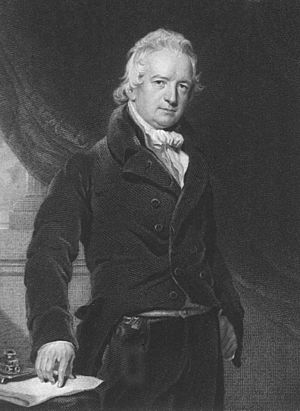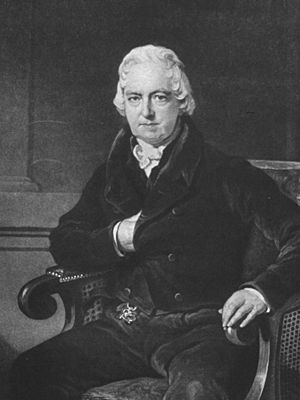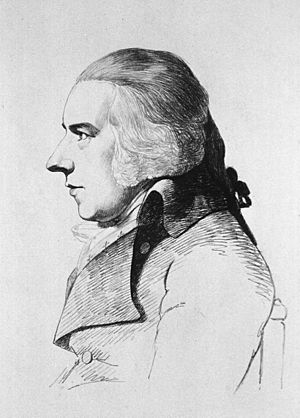John Abernethy (surgeon) facts for kids
Quick facts for kids
John Abernethy
|
|
|---|---|
 |
|
| Born | 3 April 1764 Coleman Street in the City of London
|
| Died | 20 April 1831 (aged 67) |
| Nationality | English |
| Occupation | Surgeon |
| Known for | Giving his name to the Abernethy biscuit |
John Abernethy (born April 3, 1764, died April 20, 1831) was a famous English surgeon. He is best known today for the Abernethy biscuit, a special cookie he created to help with digestion. He was also a member of the Royal Society, a group for important scientists.
Contents
Becoming a Surgeon
John Abernethy was born in London, England, on April 3, 1764. His father was a merchant. When John was 15, he started training to become a surgeon. He worked with Sir Charles Blicke, a surgeon at St Bartholomew's Hospital in London.
He also learned from other important doctors:
- Sir William Blizard taught him about the human body.
- Percivall Pott taught him about surgery.
- John Hunter was another great teacher.
In 1787, John Abernethy became an assistant surgeon at St Bartholomew's Hospital.
Starting a Medical School
John Abernethy started giving lectures on anatomy (the study of the body's structure) from his home. Many students came to listen. Because his lectures were so popular, the hospital built a special theater for him in 1790. This made him the founder of the medical school at St Bartholomew's Hospital.
He worked as an assistant surgeon for 28 years. In 1815, he became the main surgeon. He also taught anatomy at the Royal College of Surgeons of England.
His Surgical Skills
Abernethy was not known for doing many complex operations. However, he was famous for a special surgery to treat aneurysms. An aneurysm is a bulge in a blood vessel. He would tie off a major artery to help fix it.
His Beliefs and Personality
John Abernethy believed that many illnesses came from problems with digestion. He thought that if your stomach and intestines weren't working well, it could affect your whole body. He often told his patients to eat carefully and use laxatives to help their digestion.
"My Book"
Abernethy wrote a popular book called Surgical Observations on the Constitutional Origin and Treatment of Local Diseases. It was published in 1809. He called it "My Book" and often told his patients to read it, especially page 72! Because of this, people nicknamed him "Doctor My-Book."
Teaching Style
As a teacher, Abernethy was very engaging. He was good at explaining his ideas. However, some people felt he was too strict. He would state his opinions very strongly and sometimes criticize those who disagreed. This might have stopped some students from asking questions or exploring new ideas.
His Unique Way with Patients
Abernethy was known for his unusual personality. He was very direct and sometimes even rude to his patients. He didn't sugarcoat things. Despite this, he was a very skilled doctor, and people respected him.
He retired from St Bartholomew's Hospital in 1827. He passed away at his home in Enfield on April 20, 1831.
Against Animal Testing
John Abernethy was against vivisection, which is doing experiments on live animals. He did do experiments on animals, but he always made sure they were not alive first. He strongly disliked the idea of causing pain to animals.
The Abernethy Biscuit
Abernethy strongly believed that good digestion was key to good health. Around 1829, he helped create a special digestive biscuit called the Abernethy biscuit. This biscuit was made with coarse flour and was meant to be easy to digest. He promoted it as a healthy snack that could help people with their digestion.
His Writings
John Abernethy wrote articles for an encyclopedia called Rees's Cyclopædia. A collection of all his works was published in 1830. A book about his life, Memoirs of John Abernethy, was written by George Macilwain in 1853.
In Books and Stories
John Abernethy is mentioned in a famous detective story by Edgar Allan Poe called The Purloined Letter (published in 1844).
Some people also believe that his discussions with another surgeon, Sir William Lawrence, might have influenced Mary Shelley's famous novel Frankenstein.



